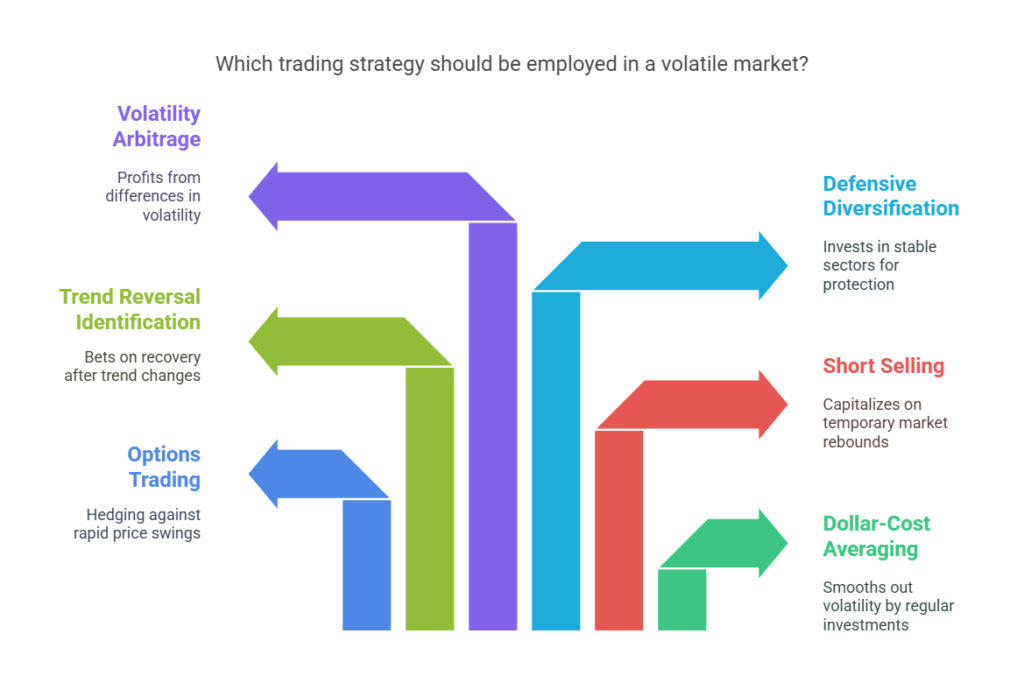If you’ve been following the stock market today, you’ve likely noticed a distinct sense of unease. Dubbed “Tariff Tuesday” by some savvy traders, this trading session has been anything but ordinary. New tariff announcements, disappointing sales data, and geopolitical uncertainties have stirred up significant volatility. In this blog post, we’ll explore what happened in today’s market, how key players like Tesla and Nvidia are being affected, and which strategies you can consider to navigate these choppy waters.
A Sea of Red: What’s Going On in the Stock Market Today?
Today’s trading was marked by widespread selloffs, especially as the US government’s latest tariffs on imports from Canada, Mexico, and China took effect. According to MarketWatch, the Nasdaq nearly entered correction territory, which means a 10% decline from recent highs. Global markets are feeling the impact, with investors across regions taking a cautious stance.
For example, the SPDR S&P 500 ETF Trust (SPY) is down about 1.16% for the day, reflecting the broad unease in the market. And if you’re tracking the tech giants, you’ll see that even industry leaders are not immune to these pressures.
Spotlight on Key Stocks
Tesla (TSLA)
Tesla has always been a headline-maker, and today is no different. With its shares trading around $271.56 (according to current market data), Tesla is under pressure after reporting a startling 49% drop in China-made vehicle sales for February compared to last year. This steep decline has rattled investors and raised questions about the company’s long-term prospects in the competitive EV market. Coupled with price target cuts from analysts, many are now considering shorting opportunities for Tesla. You can read more about the latest on Tesla’s performance in Business Insider.
Read also : What Is Elon Musk’s IQ?
Nvidia (NVDA)
Nvidia, another tech heavyweight, is also experiencing volatility. Trading near $115.73, the company’s shares have experienced some ups and downs amid fears that tariffs could affect its global supply chain. With its GPUs being the backbone of the AI revolution, any disruption can send ripples through the market. Recent investigations into potential export control bypasses have only added to the uncertainty. For a detailed analysis of Nvidia’s challenges, check out Trefis’ review.
Market ETFs
Broad market ETFs are also feeling the volatility. For instance:
- SPDR S&P 500 ETF Trust (SPY) is currently trading at $577.06.
- Invesco QQQ Trust Series 1 (QQQ) stands at $494.61.
- SPDR Dow Jones Industrial Average ETF (DIA) is around $426.16.
These ETFs track broad market indices, and their movements provide a snapshot of how the overall market sentiment is turning cautious in the face of tariff-induced uncertainty.
Comparison Table: Key Market Players Today
| Ticker | Name | Current Price (USD) | Change (%) | Intraday High (USD) | Intraday Low (USD) |
|---|---|---|---|---|---|
| TSLA | Tesla Inc. | 271.56 | -0.046% | 285.86 | 262.00 |
| NVDA | Nvidia Corp. | 115.73 | +1.67% | 116.58 | 108.87 |
| SPY | SPDR S&P 500 ETF Trust | 577.06 | -1.16% | 585.40 | 572.24 |
| QQQ | Invesco QQQ Trust Series 1 | 494.61 | -0.49% | 499.59 | 487.82 |
| DIA | SPDR Dow Jones Industrial Avg. | 426.16 | -1.39% | 432.81 | 423.84 |
Data based on the latest available market statistics.
This table not only highlights the current prices but also underscores the overall market pressure affecting even the most stable ETFs.
Unpacking the Selloff: Tariffs and Market Sentiment
The implementation of tariffs by President Donald Trump has been a catalyst for today’s market turbulence. These tariffs, especially on imports from key trading partners like China, have created uncertainty among investors. According to Barron’s, earnings for the S&P 500 might drop by up to 8% as companies brace for higher input costs and lower consumer demand.
Tariffs also contribute to a ripple effect:
- Investor Anxiety: With geopolitical tensions on the rise, the Cboe Volatility Index (VIX) has surged, reflecting a market bracing for further disruptions.
- Sector Impact: While high-growth tech stocks are taking hits, safe-haven assets like gold and dividend-paying stocks are drawing investor interest. As highlighted by MarketWatch, experts are suggesting a shift towards defensive sectors and safe-haven assets during such uncertain times.
Trading Strategies to Consider in Volatile Times
Navigating a volatile market requires a strategic approach. Whether you’re a seasoned trader or a long-term investor, having a well-thought-out plan is essential. Here are some strategies that could help you ride out this storm:
1. Dollar-Cost Averaging (DCA)
For long-term investors, DCA is a tried-and-true strategy. Instead of investing a lump sum all at once, you invest a fixed amount regularly. This approach can help smooth out the volatility and avoid the pitfalls of trying to time the market. You can read more about DCA and its benefits on Investopedia.
2. Options Trading: Hedging and Reducing Gamma Exposure
Options trading can be a useful tool in volatile markets. One strategy is to reduce gamma exposure by rolling options to a further dated expiration cycle, helping to cushion against rapid price swings. Additionally, protective put options can hedge your positions. For more details on options strategies, check out this guide on options trading.
3. Short Selling on a Pop
When you see a pop or a brief relief rally in a volatile market, it might be an opportune moment to short on the strength of the rebound. Patience is key here; wait for confirmation that the rally is temporary before taking your short positions.
4. Trend Reversal Identification
Identifying a trend reversal is crucial. Look for signals of capitulation down, and once you see a clear trend break, consider entering positions that bet on a recovery. A blend of technical indicators like moving averages and RSI can be particularly helpful here.
5. Defensive Diversification
Given the market uncertainty, it might be wise to diversify into defensive sectors such as utilities, energy, and healthcare. Dividend-paying stocks in these sectors can provide a cushion against market downturns. Check out Fortune’s list of top dividend stocks for ideas on which stocks might offer stability.
6. Volatility Arbitrage
For the more advanced trader, volatility arbitrage strategies can be appealing. This involves taking positions that profit from differences between the forecasted and implied volatility of an asset. Essentially, you’re trading the volatility rather than the direction of the stock’s price. For a deep dive into this strategy, refer to this detailed explanation on volatility arbitrage.

Key Sectors to Watch
While the broader market is showing signs of stress, certain sectors might present more attractive opportunities:
- Energy Sector: With global tensions and supply chain disruptions, energy stocks can offer significant upside. Monitor natural gas and oil prices, as these can be early indicators of broader market moves.
- Healthcare Sector: Defensive by nature, healthcare stocks often hold up better during market downturns. Companies like Johnson & Johnson and AbbVie might provide stability.
- Financials: With interest rates currently in focus, financial stocks may benefit from rising rates. Look at large banks and diversified financial services companies.
Final Thoughts
Today’s “Tariff Tuesday” is a stark reminder of how quickly market dynamics can shift. Tariffs, geopolitical tensions, and unexpected company news can all trigger sudden market selloffs. However, by staying informed and adopting well-considered trading strategies, you can navigate these turbulent times effectively.
Remember, every period of volatility also presents opportunities. Whether you’re using dollar-cost averaging to build long-term wealth, hedging with options to protect your portfolio, or even venturing into volatility arbitrage, the key is to stay disciplined and not let emotions drive your decisions.
Read also : Are AI Tools Weakening Coding Skills?
For more insights on managing market volatility and for daily trading tips, check out our Investing Education Hub. And if you’re looking for the latest updates on tech stocks like Tesla and Nvidia, sites like Business Insider and Trefis are great resources.
Stay patient, stay diversified, and keep your eyes on the long-term horizon. After all, even in the most volatile storms, there’s always a chance to not just weather the tempest but to come out stronger on the other side.

